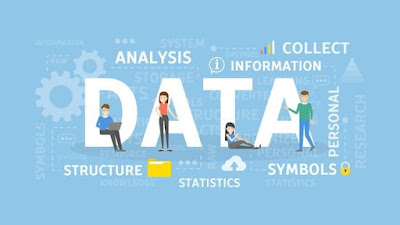What is Data Science ?
“In a world full of data, Data Science is the key to unlocking meaning.”
Imagine you're surrounded by millions of puzzle pieces — tweets, photos, weather logs, stock prices, sensor readings, shopping carts. On their own, they’re just noise. But when a data scientist steps in, something magical happens:
Those random pieces come together to tell a story, make predictions, or reveal hidden patterns.
🧠 The Human Behind the Code
A data scientist is part detective, part engineer, and part storyteller.
They ask questions like:
-
Why are sales dropping in the east region?
-
Can we predict which patients might need special care?
-
How can we make a chatbot smarter?
Using tools like Python, SQL, and machine learning, they uncover insights that help businesses, researchers, or even governments make smarter decisions.
📊 The Data Science Process — Step by Step
Let’s walk through the typical flow of a data science project (often called the Data Science Lifecycle):
1. Problem Understanding
Just like a doctor needs to diagnose before prescribing, a data scientist must clearly understand the problem.
"What are we trying to solve? What's the goal?"
2. Data Collection
Data is gathered from various sources — databases, APIs, web scraping, or sensors.
Think of this as collecting ingredients before cooking.
3. Data Cleaning (Wrangling)
Raw data is messy: missing values, duplicates, weird formats. Cleaning it is crucial.
“Garbage in, garbage out.” Clean data = better results.
4. Exploratory Data Analysis (EDA)
Here, the scientist plays around with charts, graphs, and summary stats to spot patterns.
"Are there outliers? Is there a strong trend? Any surprises?"
5. Feature Engineering
New columns are created to help algorithms learn better.
Like transforming "birthdate" into "age".
6. Modeling (Machine Learning)
Now the magic begins — algorithms like Decision Trees, Linear Regression, or Neural Networks are trained on the data to make predictions.
"Can we predict tomorrow’s sales?"
"Will this customer churn?"
7. Evaluation
The model is tested. Accuracy, precision, recall — these metrics decide if it's good enough.
If not, we go back, tweak, try again.
8. Deployment
Once the model works, it’s turned into a product — maybe a recommendation engine, a fraud detector, or a chatbot. It’s now running in the real world.
9. Monitoring & Maintenance
Even after launch, models are monitored for performance. If data changes, the model might need updates.
Introduction to Data Science
About This Course To keep up with the ever-evolving aspects of data and its domains, data handling and analysis have become crucial to understanding the information that comes attached to it, and that is exactly why data science has come such a long way. Data science is gradually conquering the world in all its glory, and that's why it's one of the most sought-after career options today, with billions peoples dream comes true may be outlined as the study of information, wherever it comes from, what it represents, and also the ways by which it may be reworked into valuable inputs and resources to form business and IT strategies. In this course, you know how the tech will be grow day by day u need to understand the growing tech in data science . You will learn about life series of data along with idea of statistics and time series along with understanding of database such as SQL and NoSQL. Once you have the initial knowledge about the data, you will how to handle large amount of data using Big Data. This course will introduce you to the world of Data Science and topics related to Data Science.
The faculty for the course is Dr. Abhinanda Sarkar, Ph.D. from Stanford University and Ex-Faculty MIT, is Academic Director at Great Learning for Data Science and Machine Learning Programs.
Certificate
Course instructor

Senior Faculty & Director Academics, Great Learning
Data Science Expert


